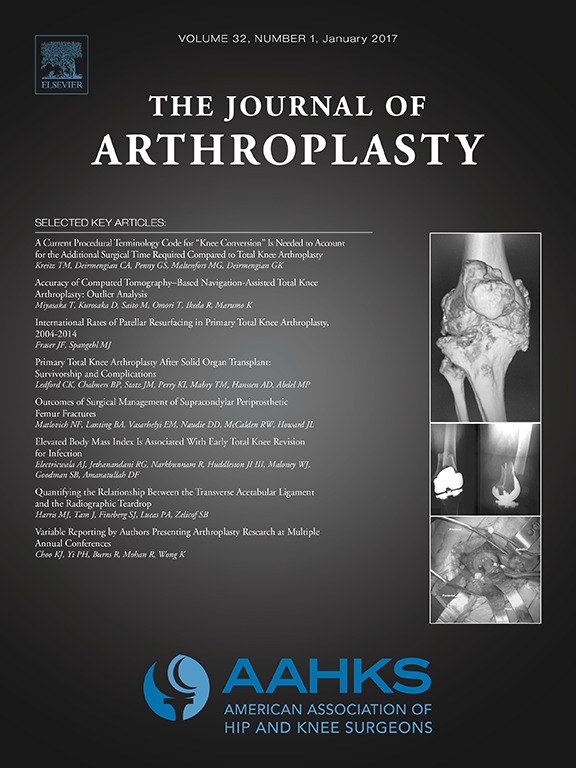
Polyethylene spacer does not improve polyethylene-cemented acetabular component fixation

Polyethylene spacer does not improve polyethylene-cemented acetabular component fixation
The cemented all-polyethylene acetabular cup: factors affecting survival with emphasis on the integrated polyethylene spacer: an analysis of the effect of cement spacers, cement mantle thickness, and acetabular angle on the survival of total hip arthropla
J Arthroplasty. 2006 Feb;21(2):191-8Synopsis
407 patients undergoing primary total hip arthroplasty (THA) were randomized to receive either an acetabular cup with polyethylene cement spacers integrated into the cup or an acetabular cup with the polyethylene spacers removed. The primary outcome examined was failure of the component. Results indicated that the polyethylene spacers did not improve fixation of the polyethylene-cemented acetabula...
To view the full content, login to your account,
or start your 30-day FREE Trial today.
FREE TRIAL
LOGIN
Forgot Password?
Explore some of our unlocked ACE Reports below!

Learn about our AI Driven
High Impact Search Feature
Our AI driven High Impact metric calculates the impact an article will have by considering both the publishing journal and the content of the article itself. Built using the latest advances in natural language processing, OE High Impact predicts an article’s future number of citations better than impact factor alone.
Continue



 LOGIN
LOGIN

Join the Conversation
Please Login or Join to leave comments.